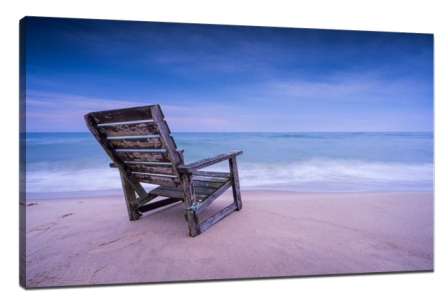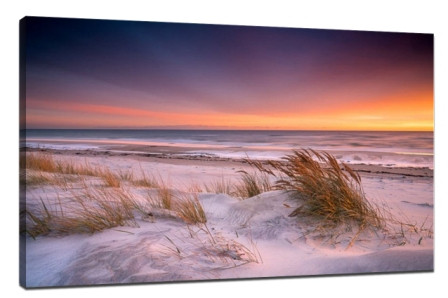Take a good picture without buying a new camera
Take a good picture without buying a new camera
Maybe many people have thought that if I had this camera, if I went to this place, I would take a good picture! But is this really the case? You think this because it's out of reach, and what you don't do is probably the best thing you can do. That's the way people are, always looking for what they can't get.
Photographers who love to take pictures must dream of going to Iceland, northern Europe, all kinds of beautiful places, pressing the shutter button in front of the magical nature, and then thinking that these photos will be the most beautiful. But even if you did, you did it, so was it the scenery or your ability? It's not a skill to photograph a place that's already beautiful, and there are countless photographers who have photographed it, and you'll never surpass your predecessors. You're just copying it.
Don't get caught up in the beauty of social media. The greatest achievement is to photograph the places around you. The equipment is of course important! But it is not the only important, any of the great image capture, rely on a perfect technical means, the wonders of photography is that it is not a textbook square data, any scenario, changes over time as the light will be different, you need to constantly practice and practice, to master exactly what parameters to use in what circumstances to shoot.
The closest place to your home is the most likely place. You can keep trying, and you can go to some scenic spots. Here are a few tips to keep in mind when you're done with your new camera.
Basic knowledge of camera and photography
The most important thing is to read the manual first. Now, it seems that everyone is not used to reading the manual, but this is the most basic one. Knowing your equipment is the first step to mastering it. Know more about the basic knowledge of photography, such as the application of guide line, basic rule of composition, exposure compensation and exposure triangle.

You can take good pictures without buying a new camera in the right conditions
The word photography itself has the meaning of painting with light. In Greek, "photos" means "light" and "graphe" means "painting and writing". Photography is the art of light, and only when light is fully mastered can we know under what circumstances and how to shoot.
Often, we think we can take a good picture when there is enough light, clear blue sky, floating white clouds, and direct sunlight on the ground. But sometimes, when you think about it from a different Angle, you can take dramatic pictures in changeable weather, rain or cloudy weather. In any case, be prepared for the weather before shooting.
Shoot the same place over and over again
The best photos aren't necessarily the ones you've only been to once in your life. They're more likely to be the closest to your home. Because you have unlimited opportunities to try, and can shoot different styles under different weather, forming a perfect theme.
Taking good pictures without a new camera can change your perspective
Most of the time, we shoot from eye level, which is a normal view, but it also creates countless images of sameness. Try shooting from a different Angle, with your waist flat or squatting down or shooting directly from a high point, like on a mountain or rock. Sometimes moving your camera can make a difference.
You can take good pictures without buying a new camera and creatively use your lens without buying a new camera. Using a wide Angle lens will cause your image to expand and deform, while using a long lens will compress and deform. Both of these deformations are based on device defects, but they can capture different effects. Choose the right lens through the preconceived image. Of course, you need more experience, and experience comes from practice and shooting.
For landscape photography, the aperture value is set between f/8 and f/16 to maximize your depth of field. Of course, you can choose a smaller aperture to get the maximum depth of field, but inevitably the sharpness of the image will be lost. Any lens will have an optimal aperture, beyond which there will be a loss.
You can even zoom or move the lens during exposure to achieve a magical effect. Of course, it's not easy to do. You also need to shoot multiple times to test the effect.
Use the surrounding elements
Take advantage of the surrounding elements, trees, rocks or other landscapes with strong color contrast, or elements that can act as a guide line, and use those elements to guide your audience through your photos in your direction. In modern society, smart phones make image acquisition less difficult. We see thousands or more images every day. It is especially important to capture the viewer's attention and stimulate their nerves. Therefore, images should have clear objects, but people, can be landmarks, all of which need to be quickly identified by the viewer.
If there are too many conflicting elements in the photo, it will confuse the viewer and slide quickly to the next image, your image will not impress them too much. More often than not, less is more, which simplifies your image and puts aside the interference factors, can more easily and directly catch the viewer's heart.
Invest in meaningful accessories, not expensive camera lenses
Investing in camera accessories will be more important than camera lenses. The most important thing in landscape photography is a good tripod, because you often use long exposures. Another important accessory is filters, which can help you take more pictures of different styles.
If you take pictures of water frequently, you may need a polarizer to reduce reflections.
Our digital cameras are not as wide as film, which means that in the same photo, there is always a distortion in the light or dark details. Maybe your landscape is perfectly exposed, but the sky is over-exposed. At this point you need a gradient filter to help the image transition between the light and the dark.
Shoot RAW and master the post
Many people may not be in the habit of shooting raw material, thinking it takes up too much space and can't be viewed directly on their phones. But raw is the best way to do it later. When you shoot JPG, everything is fixed, there is not much space for the post, while raw records all the data of your camera sensor, without any post-processing inside the camera, with richer details and better post-processing space.
Learn to focus manually
This is crucial in landscape photography, where the camera's automatic focus system often fails to find enough contrast to shoot in less light. When you're shooting a long exposure, manual focus prevents the focus from shifting during exposure, and you can adjust the focus at any time.
Think about it before you shoot it, and look at it after you shoot it
Often we go to a place to take photos, we just take out the camera and press the shutter, and we still feel not satisfied with taking dozens of identical photos in the same place. But the important thing is to move, to walk, to find the right shot and to press the shutter release, which is much more efficient than just pressing the shutter release. When you go home to organize your photos, try to study your photos, and look more at the pictures taken by other photographers. Compare the similarities and differences carefully, see where you took good pictures or where you could improve. This will give you more experience on your next shoot.
Shoot more practice more think more, the technology itself is to accumulate, after a period of time, you will find that your technology has been greatly improved. It's not too late to change equipment.
Recent Posts
-
What is rolled canvas prints
In the realm of interior decor and artistic expression, canvas prints have emerged as a popular medi …10th Apr 2024 -
The benefits of printing family photos on canvas
In an age dominated by digital screens and fleeting images, the value of printed photographs cannot …7th Apr 2024 -
The best ways to use canvas prints for home decor
In recent years, canvas prints have emerged as a popular choice for home decor, adding style, person …3rd Apr 2024
